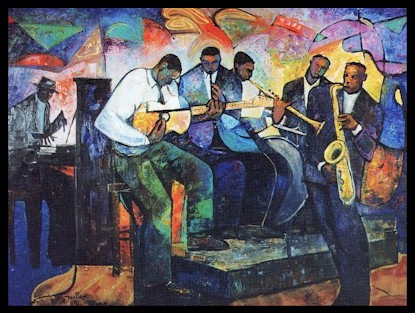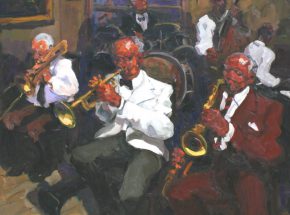

William Tolliver spent more than 38 of his 48 years perfecting his skill as an artist.
It all began when he was about seven; his mother would conduct art contests between herself, Tolliver and his older brother to see who could draw the best. Although his brothers’ interest in art waned, Tolliver’s never did, it only got stronger.
Relocating from Lafayette, La. in 1991, he opened a gallery in the district of Buckhead in Atlanta, Ga. He remained there until 1997.
The Vicksburg, MS native handled figure studies, portraits, human interest situations, landscapes, and semi-abstracts, all with equal perfection and all from a photographic memory.
He never received any formal training, however, Tolliver attested to reading more than 4,000 books on different subjects, but mostly on art – his thirst for the subject was unquenchable. He educated himself by studying the classics: Chagall, Monet, Van Gogh and Picasso.
Tolliver learned as a young artist the technology of color blending by using a paint-by-number kit. He explained that once he saw how colors blended to make other colors, he had learned the system of color blending. He said he only half finished the picture in the kit before the light bulb came on. At 10, he could create “academically correct” paintings and drawings.
At 13, while studying the classics, Tolliver noticed that his lines and style were very much like that of Picasso. Picasso was an avid appreciator of African art. The style Picasso used, cubism, was taken from African art. He spent a lot of time in African museums and developed an African style (cubism) “I knew my lines were like Picasso’s but it wasn’t until later I knew why.”
Cubism was not the only style Tolliver used. He incorporated abstract, realism, and impressionism with his own techniques. He used them all like tools to create the different elements in his paintings.
At 14, Tolliver knew technical art terms; his art was totally original, and he no longer liked the realism style. All of his art reflects his originality and speaks for itself. The people in his paintings display pride, strength and soul. Whether they are cotton pickers, or radiant beauties, the consistency of a proud and beautiful people is there.
Topping his long list of achievements, Tolliver has had one of his masterpiece works travel with the Smithsonian Museum. He was also commissioned by the Olympic Games Committee to create a piece (depicting the “Spirit of Georgia”) for the 1996 Olympic Games held in Atlanta, GA.
Art demands a response, whether it’s good or bad – that was the objective of this artist. When looking at Tolliver’s art, one is sure to respond – to the artist’s creative and vivid use of colors, his composition, lines or subject. In all of those areas, he demonstrated the God-Given talent that he discovered early in life.


